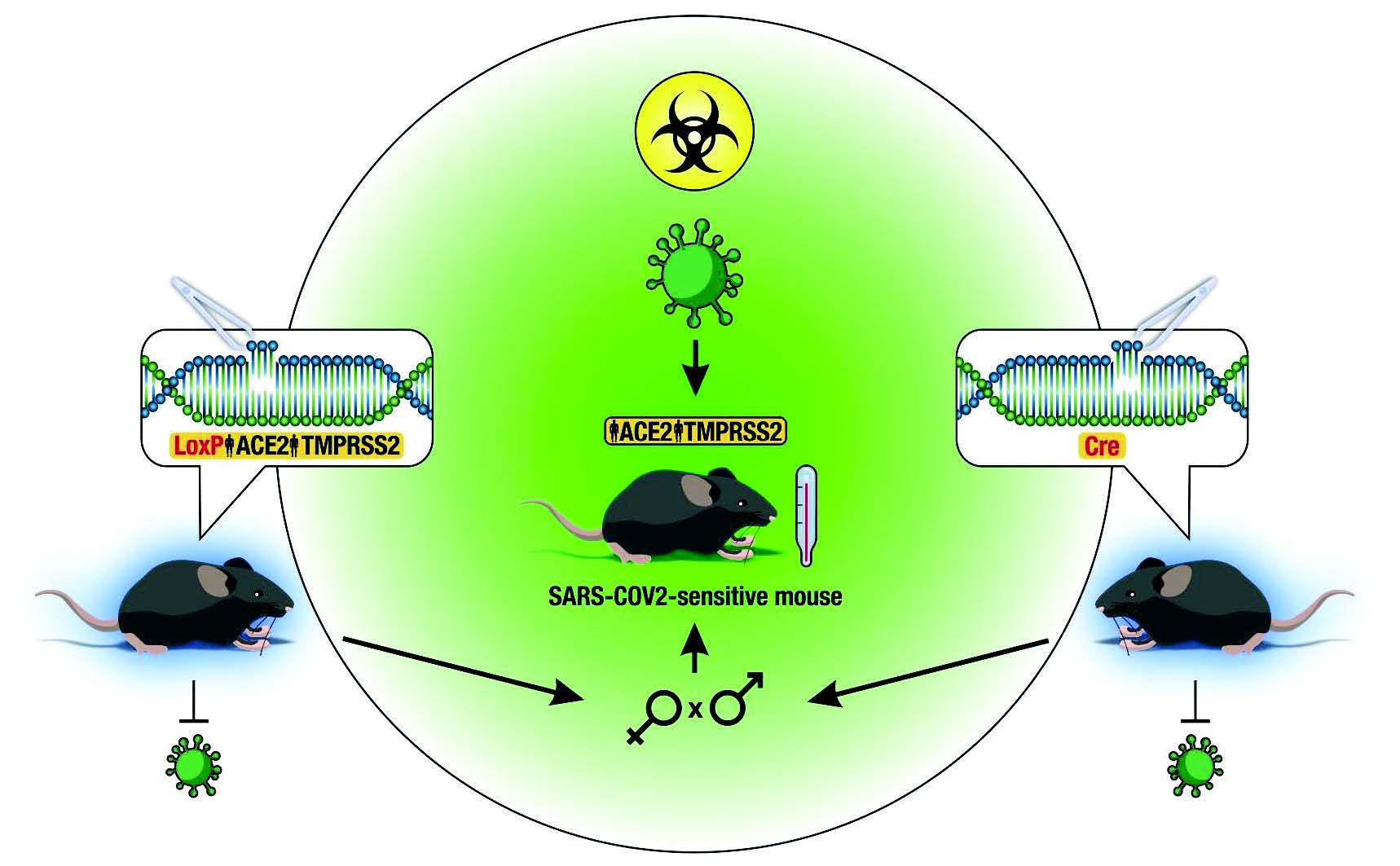On the way from SARS-CoV-sensitive mice to murine COVID-19 model
DOI:
https://doi.org/10.3897/rrpharmacology.6.53633Abstract
The coronavirus disease 2019 (COVID-19) is a master killer which appeared suddenly and which has already claimed more than 200,000 human lives. In this situation, laboratories are in urgent need for a COVID-19 murine model to search for effective antiviral compounds. Here we propose a novel strategy for the development of mice that can be inoculated by severe acute respiratory syndrome coronavirus 2 (SARS-CoV-2), the COVID-19 causative agent. In humans, two proteins – ACE2 and TMPRSS2 – are involved in SARS-CoV-2 cells entry and, thus, we decided to introduce their genes into a murine genome. These genes will be placed with LoxP sites under the murine Tmprss2 promoter. Such an approach can provide a representative model with the opportunity to control the viral sensitivity of an animal population and tissue specificity of hACE2 and hTMPRSS2 expression.
Graphical abstract:
The new COVID-19 model should be based on inducible co-expression of the human ACE2 and TMPRSS2 genes. Activation of ACE2 and TMPRSS2 genes will occur only in the virological laboratory, after crossbreeding with Cre-mice. Before activation, mice will be resistant to SARS-CoV-2 for their biological safety during the pandemic.
 Русский
Русский
 English
English

